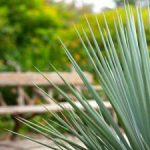Leaves have fallen, branches are bare, yards have gone dormant, and mulch has been laid with care. But the scream of chainsaws signals the season of that most shocking practice of local arboriculture: crape murder.
The absurd tradition has become a standard in Texas landscaping. If you’re considering it, remember that severe pruning could permanently disfigure one of your loveliest trees.
Two forms are practiced:
- Pollarding involves the removal of all the branches from the trunk, leaving a swollen fist protruding like an angry stub of broccoli.
- Topping is a less formal method of just cutting the branches to stubs.
Pollarding the trees on communal land once provided medieval villagers with winter fuel and lowered the growth within easy reach of foraging livestock. But even if you’re keeping goats, it’s a good idea not to feed them your crape myrtles.
So why do we do it? A common misconception that the more a crape myrtle is cut, the more it will bloom. This is fiction. SUN is what makes a crape myrtle bloom, and not having it — around your live oaks, for instance — is usually the main reason if yours aren’t blooming.
It’s possible it was planted in the wrong place — seems everybody wants one these days, whether they have places to put it or not. I’ve seen crapemyrtles stuffed into walls, windows, and AC condensers with nary a drop of sunlight all year long. But even without flowers, crape myrtles reward you with the sculptural beauty of their graceful trunks.
Instead of lowering your crape myrtles, make a resolution to let them help lower your water bill! Other plants grown in their shade will be protected from summer scorch and require less water during drought.




